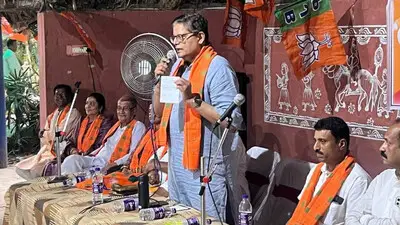Recommended Stories
Edward Kutchat, who was the head of the tribal council in Car Nicobar island, was initially reluctant to provide additional land for the expansion of an airfield, recalls historian Dr Tilak Ranjan Bera in his latest book "A journey through Nicobars".
However, when Nehru invited the tribal leader at a party in New Delhi in the late 1950s and requested him for the land, he couldn`t refuse.
Since the Nicobarese were still caught up with the age- old trading system of barter, the most precious thing which the tribal leader could think of exchanging the land with was the in-vogue jacket which Nehru was then wearing.
"Instead of a quantum of money to settle the deal, to everyone`s surprise, Kutchat asked for the `achkan` (jacket) that the Prime Minister was wearing. Possibly, that was the most attractive portable item which was visible to him in the banquet hall. Though the guests were quite amused, the prime minister accepted the deal with delight," Bera writes.
Beautifully blending the collar of the knee-length desi `achkan` with the Western suit jacket, the hip-long Nehru jacket went on to become a symbol of modern Indian aristocracy. In the following years, it emerged into a global fashion trend and even the Beatles group was seen flaunting the Nehru jacket, the book says.
"The Nicobarese had no interest in money. Currency played a rather insignificant role in their society at that time.
They had plenty of coconuts, ambergris, pigs and pandanus for barter, which was the only form of transaction the Nicobarese captain knew of," says the book released recently at the Oxford Bookstore here.
Kutchat was honoured by the President of India later in 1989 with the Padmashree Award for his co-operation.
But after Kutchat`s death when Nehru`s grandson Rajeev Gandhi visited the Car Nicobar island as the then Prime Minister of the country, he was left disappointed on seeing the coat in a tattered state.
"In fact, by then it had transformed into a mass of dust.
None of the family members wore the coat for many years, as it was not the usual dress of the village society. The long and severe rainy season and the humid weather of the region caused the decay of the well-tailored coat," the book says.
Gandhi then offered his own coat to be kept as a memento of the historical and interesting deal. He was fond of `gala bandh` coat which is much shorter than an `achkan` and with the collar tightly closed.
Beautifully blending the collar of the knee-length desi `achkan` with the Western suit jacket, the hip-long Nehru jacket went on to become a symbol of modern Indian aristocracy. In the following years, it emerged into a global fashion trend and even the Beatles group was seen flaunting the Nehru jacket, the book says.
They had plenty of coconuts, ambergris, pigs and pandanus for barter, which was the only form of transaction the Nicobarese captain knew of," says the book released recently at the Oxford Bookstore here.












